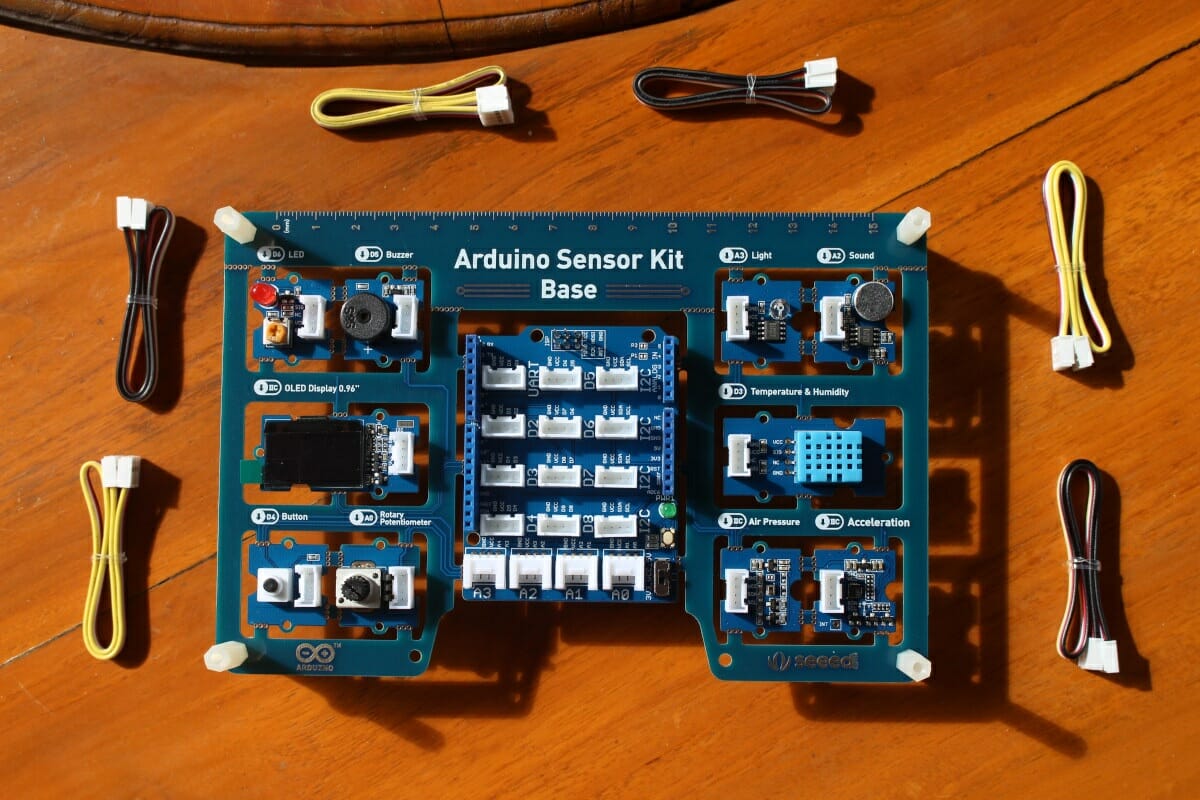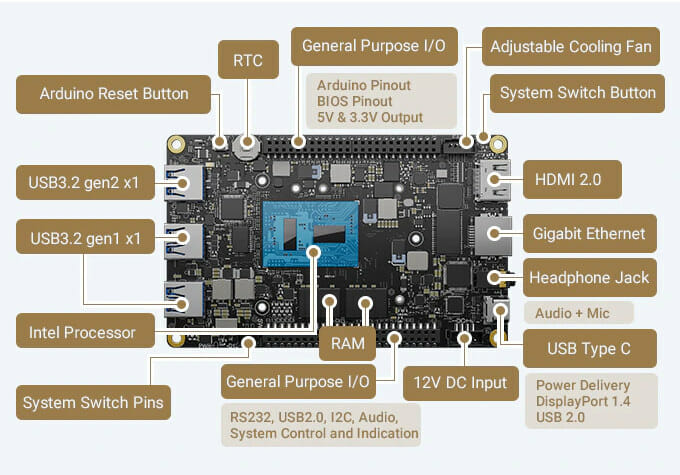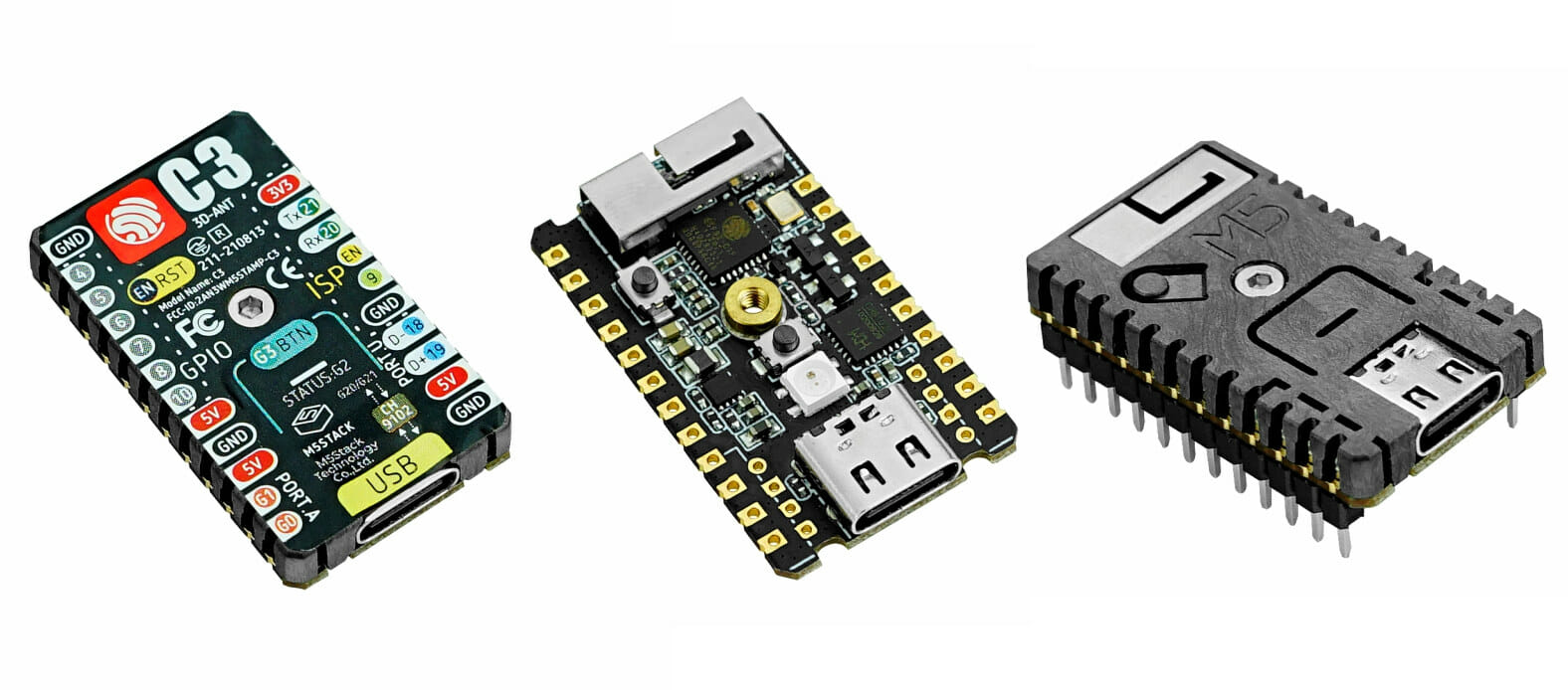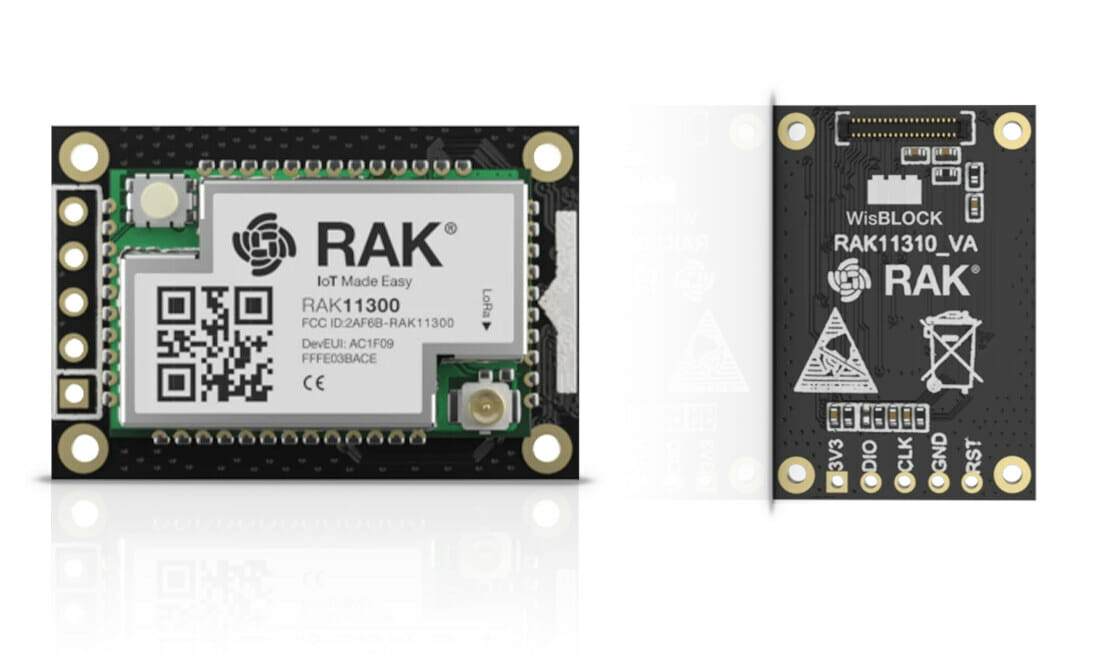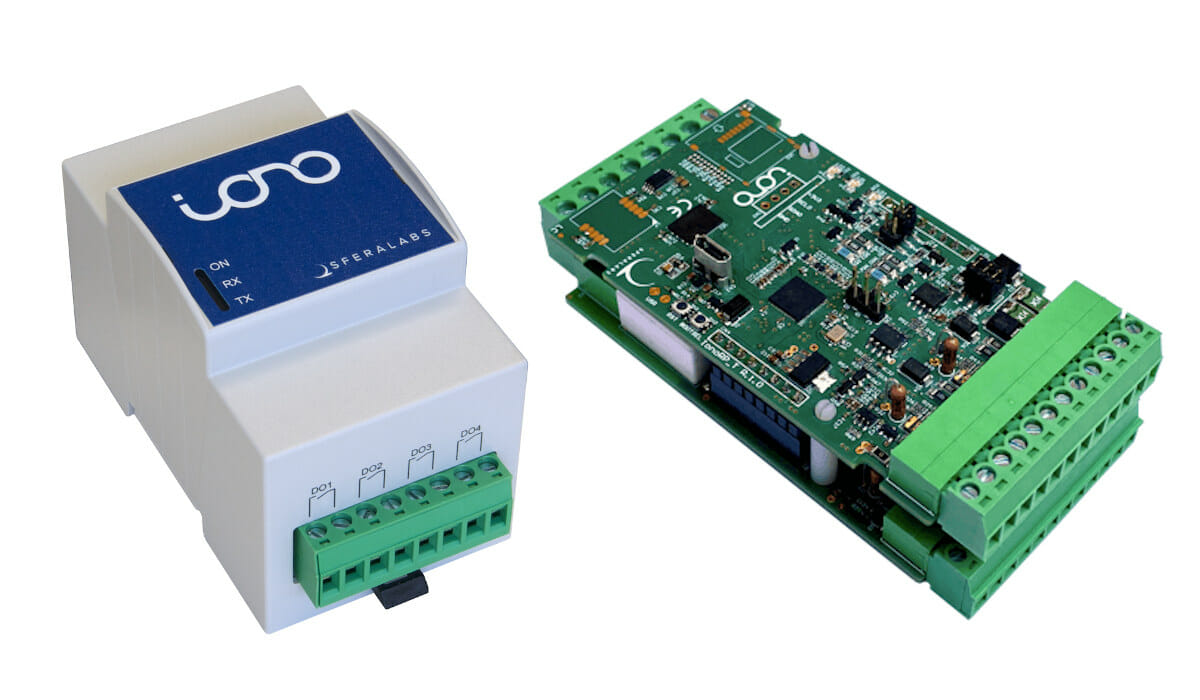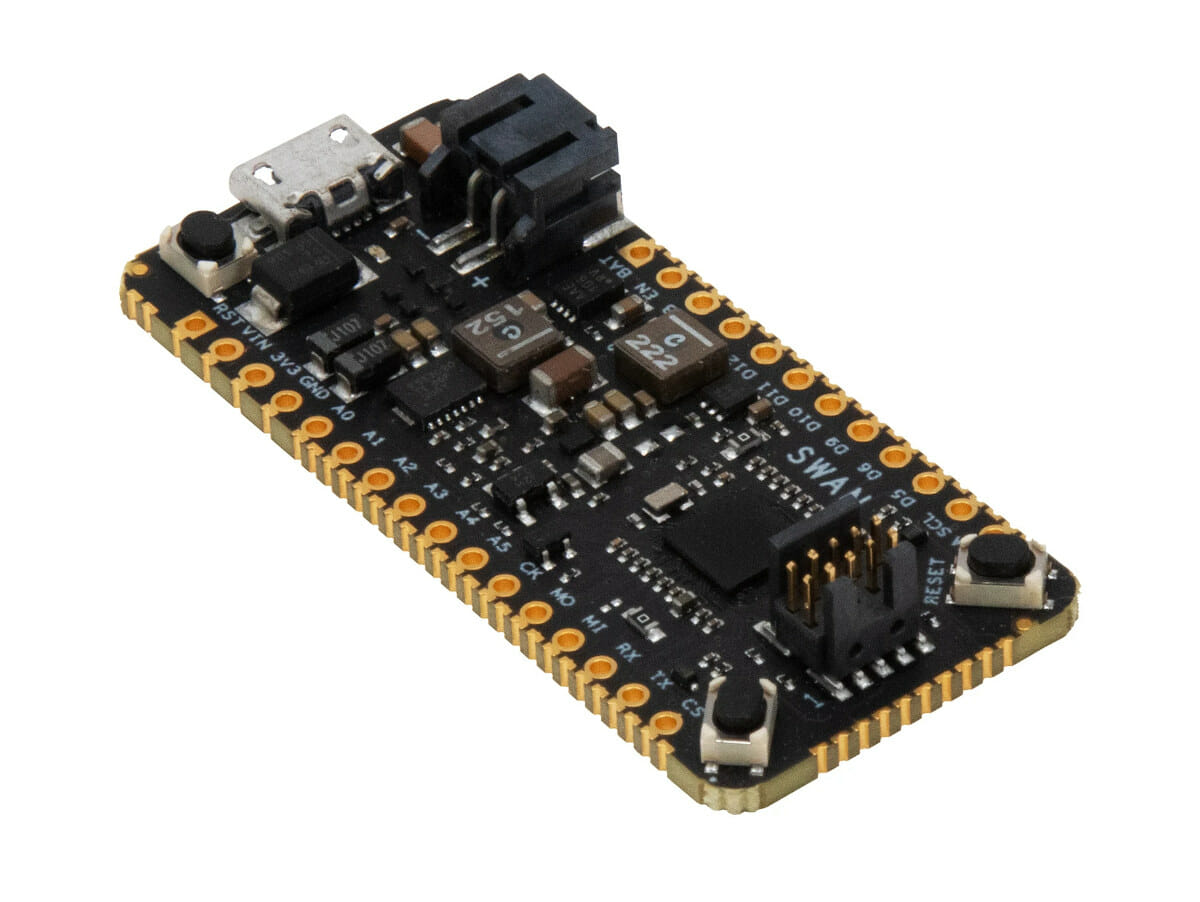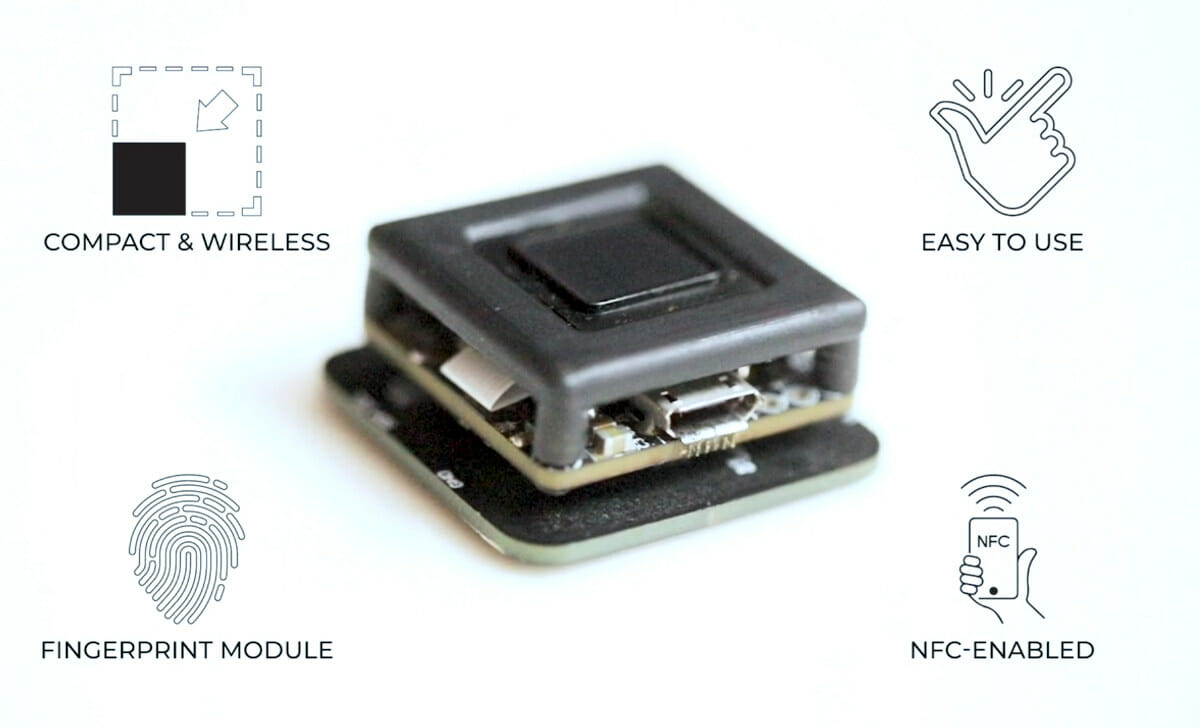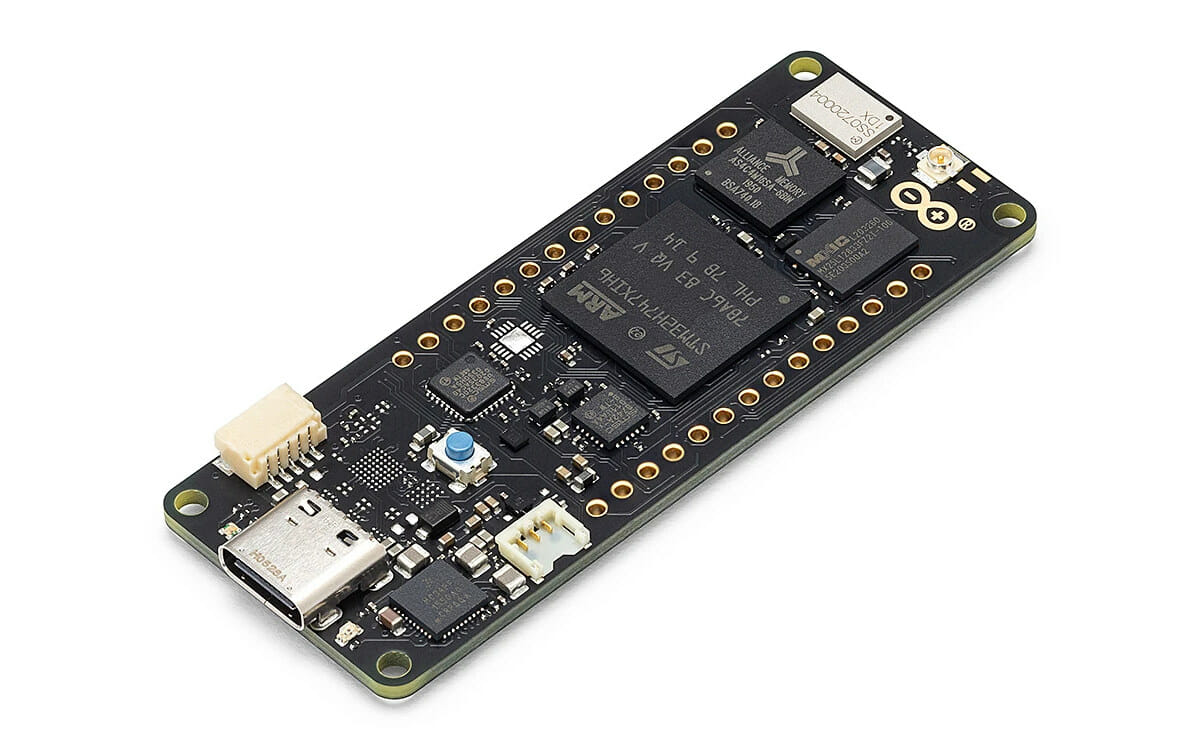Day 6 of giveaway week 2021 will be for the Arduino Sensor Kit Base, a large board with six Arduino modules with Grove connector plus an Arduino shield with Grove connector. You could use it directly on top of an Arduino UNO or compatible to have a massive shield with multiple modules connected with Grove cable, or you could break it out into smaller modules as you see fit. The kit ships in a protective carrying plastic case with six Grove cables to connect the six Arduino modules to the Grove shield in the middle of the board. I told Seeed Studio I would not have time to review it, but they still sent it to me last December. So I’m here with a kit that I’m probably never going to use so better just give it away. You can enter the draw by simply leaving a comment with your […]
LattePanda 3 Delta SBC combines Celeron N5105 SoC with Arduino (Crowdfunding)
LattePanda 3 Delta is the new version of the x86 + Arduino board introduced in 2015 with an Intel Atom x5-Z8300 processor, and followed by LattePanda Alpha/Delta in 2017 with respectively Kaby Lake and Gemini Lake processors. The new LattePanda 3 Delta brings some serious performance boost with an Intel Celeron N5105 quad-core Jasper Lake processor that doubles the CPU performance, triples the GPU speed, and enables smooth 4K HDR video playback. Plus no vaccine is required that for that delta variant! 😉 LattePanda 3 Delta specifications: SoC – Intel Celeron N5105 quad-core Jasper Lake processor @ 2.0GHz / 2.9GHz (Turbo) with Intel UHD graphics 605; 10W TDP System Memory – 8GB LPDDR4 @ 2933 MHz Storage 64GB eMMC flash M.2 M Key socket for NVMe SSD M.2 B Key socket for SATA SSD MicroSD card socket MCU – Arduino Leonardo compatible Video Output HDMI 2.0 DisplayPort via USB Type-C […]
M5Stamp C3 RISC-V board supports WiFI 4, Bluetooth 5.0 Long Range and 2 Mbps bitrate
It was only last month that M5Stack launched the M5Stamp Pico module based on an ESP32-PICO-D4 SiP and heat-resistant plastic shell, but M5Stamp C3 board is already out with most of the same specifications and features but an ESP32-C3 RISC-V SoC replaces the ESP32 dual-core Xtensa processor. M5Stamp C3 offers WiFi 4 and Bluetooth 5.0 with high bitrate and long-range connectivity and comes with the same heat-resistant plastic shell, but the company also highlights the RSA-3072-based secure boot and the AES-128-XTS-based flash encryption as a more secure way to address Bluetooth security concerns. M5Stamp C3 specifications: WiSoC – ESP32-C3FH4 32-bit single-core RISC-V processor @ up to 160 MHz, with 384KB ROM, 400KB SRAM, 8KB RTC SRAM, 4MB embedded flash, WiFI and Bluetooth Connectivity 2.4 GHz WiFi 4, 20 MHz and 40 MHz bandwidth, IEEE 802.11 b/g/n protocol, up to 150 Mbps Bluetooth 5, Bluetooth mesh, with supports for 125 Kbps, […]
RAK introduces Raspberry Pi RP2040 based LoRaWAN core, more Wisblock modules
RAKwireless has just launched the RAK11310 WisBlock LPWAN Module with Raspberry Pi RP2040 MCU and LoRaWAN connectivity, as announced after launching 14 new WisBlock modules for IoT prototyping last July. The RAK11310 module was introduced as part of the “Just Track It RAK Autumn Launch 2021” event together with the smallest WisBlock Base Board so far, as well as 11 new Wisblock modules which bring the total to 47 modules. RAK11310 – Raspberry Pi RP2040, LoRaWAN connectivity RAK11310 specifications: RAK11300 WisDuo LPWAN Module MCU – Raspberry Pi RP2040 dual-core Cortex-M0+ microcontroller @ 133MHz with 246 kB RAM LoRa connectivity SX1262 LoRa transceiver Worldwide frequency coverage RAK11310L – EU433, CN470 RAK11310 – EU868, US915, AU915, KR920, AS923, IN865, RU865 LoRaWAN 1.0.2 protocol stack (supports Class A & C) I/O ports – UART, I2C, GPIO, USB through a “Wisconnector” Debugging – Serial Wire Debug (SWD) interface Supply Voltage – 2.0 V ~ […]
Iono RP – An industrial PLC with a Raspberry Pi RP2040 MCU
Raspberry Pi RP2040 MCU has been used in many boards, but I think I had seen the dual-core MCU in a PLC, or even any industrial products just yet. Sfera Labs Iono RP is a compact I/O module (PLC) with a Raspberry Pi RP2040 microcontroller that’s programmable in C/C++ and MicroPython, or even the Arduino IDE. The DIN-Rail mountable, RP2040 based industrial PLC offers digital and analog input and output lines, power relays, and an RS-485 interface, supports power input from 12V-24V with all signals accessible through terminal blocks. Sfera Labs can also provide some optional options such as an RTC or an earthquake sensor module. Iono RP PLC specifications: MCU – Raspberry Pi RP2040 dual-core Arm Cortex-M0+ @ 133MHz with 264kB on-chip SRAM Storage – 16MB SPI flash, optional microSD card slot Communication interface – standard RS-485 interface with electrostatic discharge protection Inputs/Outputs via terminal blocks 4x power relay […]
Blues Wireless Swan board adds castellated holes to Adafruit Feather form factor
We’ve often written about Adafruit Feather-compatible boards in the past, but Blues Wireless Swan board is a little different, as the STM32L4-based board comes with castellated holes instead of just through holes which allows the board to expose up to 55 GPIOs, or 36 more pins than a traditional feather-compatible board. The company also introduced the “Feather Starter Kit for Swan” that enables the board to work with the company’s Notecard LTE Cat-M/NB-IoT M.2 modem that ships with 10-year (up to 500MB) of IoT connectivity, as well as GPS/GNSS connectivity. The Swan board Swan specifications: MCU – STMicro STM32L4R5 Arm Cortex-M4 microcontroller clocked at 120Mhz with 2MB of flash and 640KB of RAM USB – 1x Micro USB port for power and programming Castellated holes giving access to 55 GPIO including: 8x analog input 16x digital 4x I2C, 3x SPI 1x USB OTG full speed 1x 14-channel DMA 12-bit ADC, […]
Chhavi – An ESP32-based fingerprint sensor with optional NFC, battery (Crowdfunding)
Chhavi is a compact, wireless, touch-capacitive fingerprint sensor based on ESP32 WiFi and Bluetooth SoC that is offered with optional NFC connectivity and a battery. The Arduino programmable fingerprint sensor is equipped with Fingerprints‘ FPC BM-Lite fingerprint capacitive biometric sensor that’s much more compact and power-efficient than traditional optical fingerprint sensors. Chhavi specifications: SiP – ESP32-PICO-D4 system-in-package with ESP32 dual-core processor @ 240 MHz, 4 MB SPI flash Fingerprint sensor FPC BM-LITE Module with 99% accurate fingerprint sensing Sensor matrix: 160 x 160 pixels Number of pixels: 25,600 pixels Active sensing area: 8 x 8 mm Features – Automatic finger detection, one-to-one verification mode Durability – 10 million finger placements Connectivity 2.4 GHz 802.11 b/g/n Wi-Fi via ESP32 Bluetooth BLE 4.2/5.x via ESP32 Optional 13.56 MHz NFC via NXP PN7150 NFC I2C controller 3D antenna Display – FPC connector for display USB – 1x Micro USB port for power/charging, and […]
Portenta H7 Lite Connected brings back WiFi & Bluetooth
Arduino has launched another Arduino Pro board! Well, sort of. Let’s not get too excited. The Portenta H7 Lite Connected is based on last month’s Portenta H7 Lite that itself was a cost-optimized version of Portenta H7 board without a wireless module, USB-C video output, and only fitted with the lower cost Microchip ATECC608 secure element. Portenta H7 Lite Connected is exactly the same board, except it brings back the Murata 1DX module with 2.4GHz 802.11b/g/n WiFI 4 and Bluetooth 5.1 BR/EDR/LE connectivity, plus the related u.FL antenna connector. Portenta H7 Lite Connected specifications: Microcontroller – STMicro STM32H747XI Cortex-M7 @ 480 MHz + M4 @ 200 MHz MCU with 2MB dual-bank Flash memory, 1 MB RAM, Chrom-ART graphical hardware accelerator System Memory – 2MB SDRAM (upgradeable up to 64MB) Storage – 16MB QSPI NOR Flash (Upgradeable up to 128MB) Connectivity 2.4GHz WiFi 802.11b/g/n up to 65 Mbps and Bluetooth 5.1 […]


